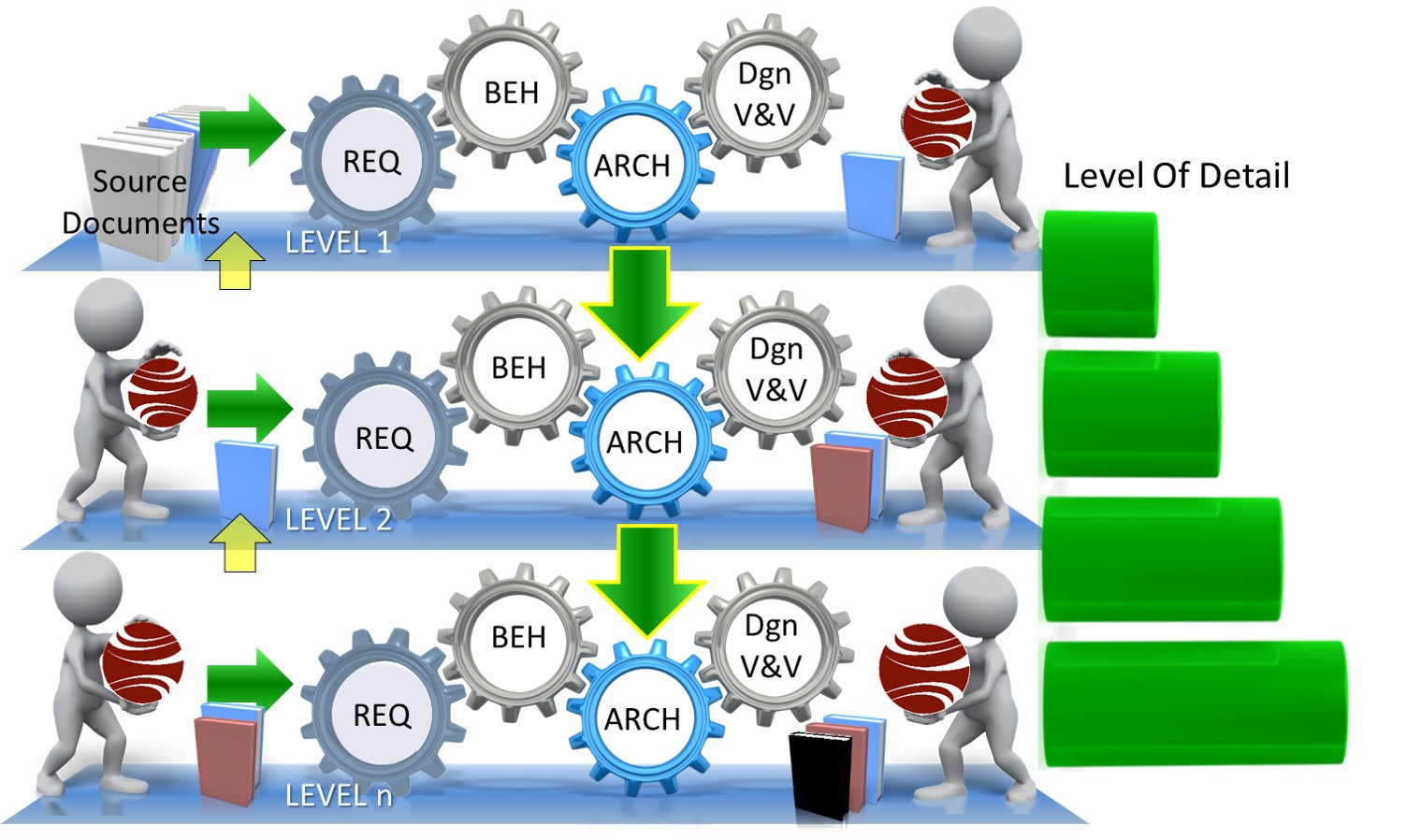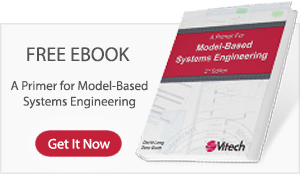STRATA: a layered approach to project success
STRATA™ is a layered approach to systems engineering and general problem solving. Rather than executing deep dives around specific topics or subsystems, STRATA focuses first on understanding the top-level interactions—between requirements, between the system and its environment, between aspects of the architecture—before moving to greater depth in areas of interest. Executed properly, STRATA is an effective and efficient approach to aligning team understanding of problem and solution, unlocking the collective team intelligence and providing a framework within which detailed decisions are informed by the greater context.

While the STRATA methodology is supported in Vitech tools, GENESYS does not require that you implement STRATA. Likewise, STRATA is not limited to model-based systems engineering. It is a problem-solving approach that yields benefits independent of tooling or problem domain.
Understand, align, and succeed through STRATA:
Establish and maintain a holistic understanding of problem, context, and solution.
In systems, interactions drive emergence and the additive value—or unintended consequences when errors are made. Many approaches fragment or overlook these interactions, whereas STRATA stresses beginning with a high-level understanding and embracing and leveraging these interactions to greatest effect. This high-level understanding—the scope and interactions between the enterprise perspective, problem definition, system context, top-level behavioral and physical architecture, and V&V—provides the fundamental framework within which the project progresses. It defines the architecture which can be progressively elaborated to greater detail, successfully converging the design envelope. It aligns the team’s understanding, empowering them with the insight necessary to make good decisions.
Maximize your ROI by focusing on unknowns and areas of risk.
A common flaw among many systems engineering efforts—particularly model-based initiatives—is going too deep. With a holistic picture spanning context, need, solution, and V&V, you have a framework within which to apply good engineering judgment. Minimize your efforts in areas you understand well, where the requirements and technologies are relatively static. Invest more time and go to greater depth in areas of new requirements, aggressive system performance, new or immature technology, high risk, or high consequence of failure. Focus your systems engineering resources in areas of the unknown for greatest impact.
Prepare for changing requirements, technologies, budgets, and schedules.
The accelerating pace of change—user needs, emerging technologies, and project constraints—is reality. Your approach must embrace this change. With the emphasis on understanding interactions and defining a high-level, end-to-end architecture, STRATA equips you to respond effectively in the face of change. Assess changing requirements with full impact analysis, stepping back to update the architecture in the face of breaking changes, moving forward where your solution can already support the new need. Evaluate technologies with full traceability, confident that you understand interfaces and interactions. When your systems engineering project plan changes, realistically assess where unknowns and risks remain, prioritizing your investments. When project budgets are reduced and schedules tighten, make defensible decisions with the holistic understanding of project and system dependencies and interactions.
Support traditional, incremental, and agile project lifecycles.
Different projects and different organizational cultures call for different project lifecycle approaches. STRATA complements traditional, incremental, and agile approaches. In a traditional methodology, STRATA establishes the top-level architecture which is progressively elaborated across the entire breadth of the system until the design envelope is sufficiently defined to transition to detailed design. In incremental and agile approaches, the top layer establishes the fundamental framework defining the key interactions and interfaces. Within that holistic understanding, specific capabilities can be implemented, matured, and released with the confidence that they will work within the greater architecture and ultimately contribute to meeting the user needs.




